FEATURE STORY
Dodge Your Biggest Health Risks
Here are the deadliest threats to people in their 50s, and how to keep them from catching up with you

MATT KAEBERLEIN, 53, had been feeling low-energy for years. Finally, he asked his doctor to run some tests. Kaeberlein, CEO of a health care start-up and former director of an institute on healthy aging, was low in vitamins D and B12 and omega-3, deficiencies linked to heart disease and cancer, the top two causes of death for Americans in their 50s, according to the Centers for Disease Control and Prevention (CDC). Says a now-vigorous Kaeberlein, “If it can happen to me, it can happen to anyone.”
To help you stay on top of your biggest risks, AARP looked at five of the leading killers of people in their 50s and quizzed the top scientists in each area for their best advice.
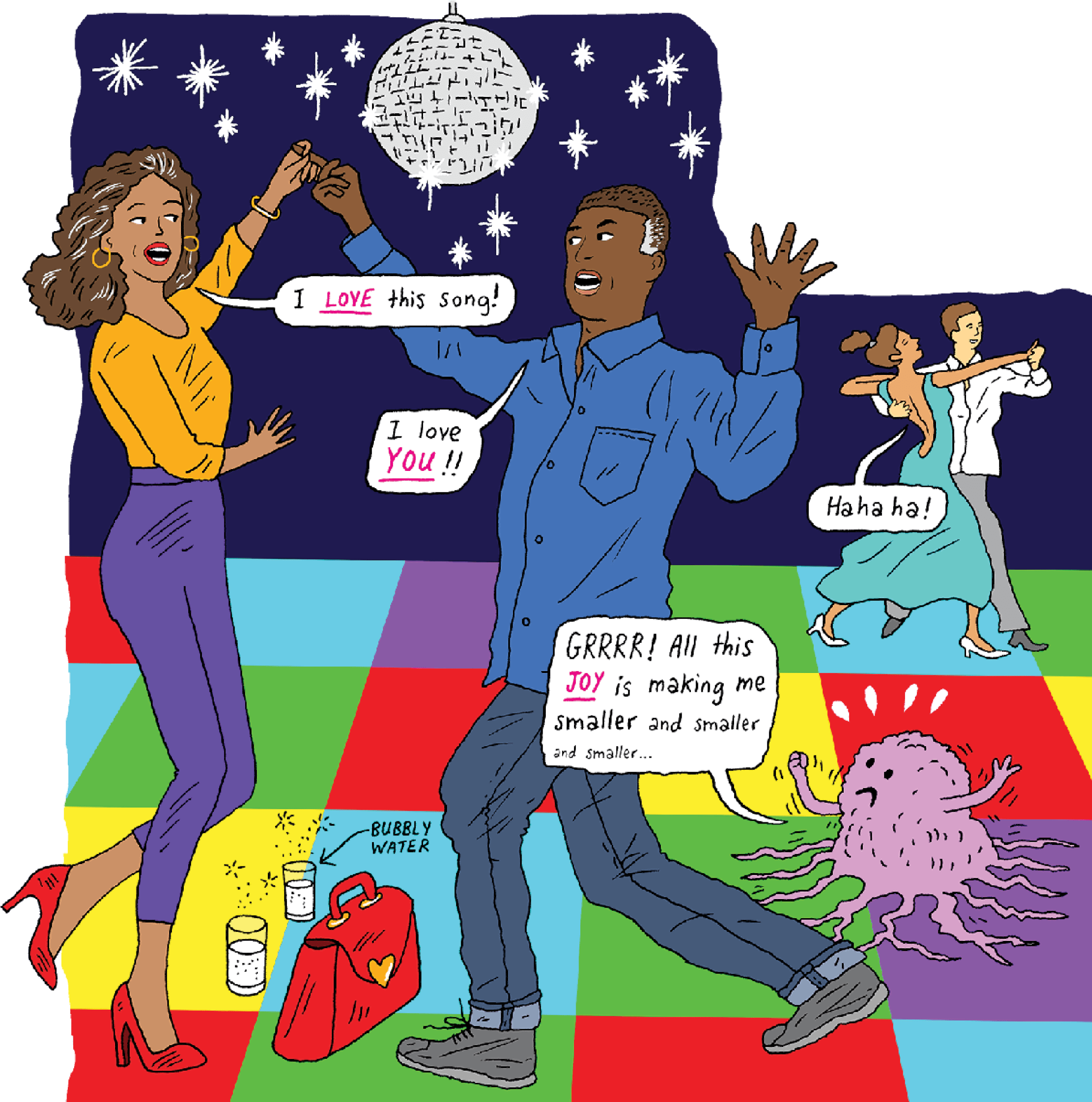
RISK #1
Cancer
The best way to save your own life? Get the cancer screenings you need now
Let’s start with the bad news: “By the time you reach 50, you’ve got well over 70 billion cells with cancer-associated mutations in your body,” says James DeGregori, deputy director of the University of Colorado Cancer Center.
That doesn’t mean you have cancer, or even that you’ll eventually get cancer, he says. Even people who go their entire lives without a cancer diagnosis have these mutations. “Our bodies have evolved amazing mechanisms to stop cancer in its tracks,” DeGregori says. “But all it takes is one of those cells to go rogue, and it becomes full-blown cancer.”
Those odds increase after the age of 50, when “90 percent of cancers occur,” says DeGregori. In fact, your risk more than doubles during this decade, according to the American Cancer Society.
That’s because your immune system has taken a beating over the years, and it’s not as efficient at killing cancerous cells as it was during those first five decades. “The cells in our body are constantly being exposed to DNA damage, whether it’s sunlight or pollutants from our environment,” says Wendy Chen, M.D., an oncologist at the Dana-Farber Cancer Institute. “Our body is always furiously trying to repair it, but after 50, the balance between repair and damage doesn’t always match up.”
Still, there are steps you can take to help your immune system bring its A game.
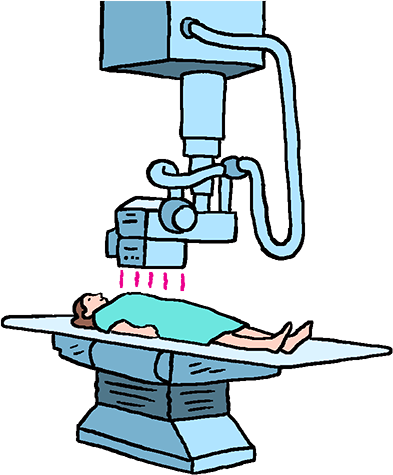
1. Get the screenings you need.
“If you do nothing else when you’re 50, get screened for cancer,” says Nigel Brockton, vice president of research at the American Institute for Cancer Research (AICR) and a two-time cancer survivor.
But which screenings are right for you? It depends on your lifestyle and family history. To get started, Brockton suggests visiting cancerhealthcheck.org, run by the AICR. “It’s a quick assessment that can alert you to your specific lifestyle risk factors,” he says.
It can also prompt you to have a more meaningful talk with your doctor. “Everyone knows that women should be getting mammograms every two years after 50, and if you haven’t already, it’s time to schedule that colonoscopy,” says Chen. “But what about screenings for lung cancer or cervical cancer or prostate cancer? Not everyone needs them, but you’ve reached an age when it’s time to discuss it with your doctor. It’s up to you to be the squeaky wheel.”

2. Get vitamins from plants when possible.
Most studies have found that nutritional supplements aren’t very effective at lowering cancer risk, DeGregori says. “You’re better off getting your vitamins the natural way, with fresh fruits and veggies.”
Plant-based foods contain thousands of unique compounds (polynutrients) that “help repair DNA and potentially slow the growth rate of some cancer cells, among many functions,” says Annette M. Goldberg, a dietitian at the Dana-Farber Cancer Institute. They’re also low in calories, making it easier to control or lose weight, which is especially important given the connection between obesity and a higher risk for breast, colorectal, esophageal, kidney, gallbladder, uterine, pancreatic and liver cancers.
But be wary of “super-foods” that promise “a silver bullet,” says Goldberg. There’s no conclusive evidence that any specific food is necessary to prevent cancer. The key is variety, not cherry-picking one magic food that’ll save you.
3. Take a brisk walk.
Regular exercise is one of the most effective ways of reducing your cancer risk, and even short periods of activity can help, says Chen. A 2023 study published in JAMA Oncology found that subjects who walked briskly for at least four to five minutes a day, even if they didn’t otherwise exercise, were 31 percent less likely to die of 13 different types of cancer than people who just strolled gently from place to place. The key is walking quickly rather than taking leisurely strolls.
4. Worry less.
“In addition to a healthy diet, exercise and not smoking, limiting your stress should be part of your strategy for reducing the risks of cancer and other diseases,” says DeGregori. So be healthy—but don’t stress about being healthy. “You’ll undo any good you’re accomplishing if you’re just worrying about not doing enough.
“Do I still have a beer at night?” DeGregori says. “Sure. I just don’t have three beers.”
SURVIVAL TIP
Plant, and eat, a garden
One study linked living to 100 with agricultural activities like gardening and farming. Another found that gardeners consume an average of 1.4 grams more fiber each day.
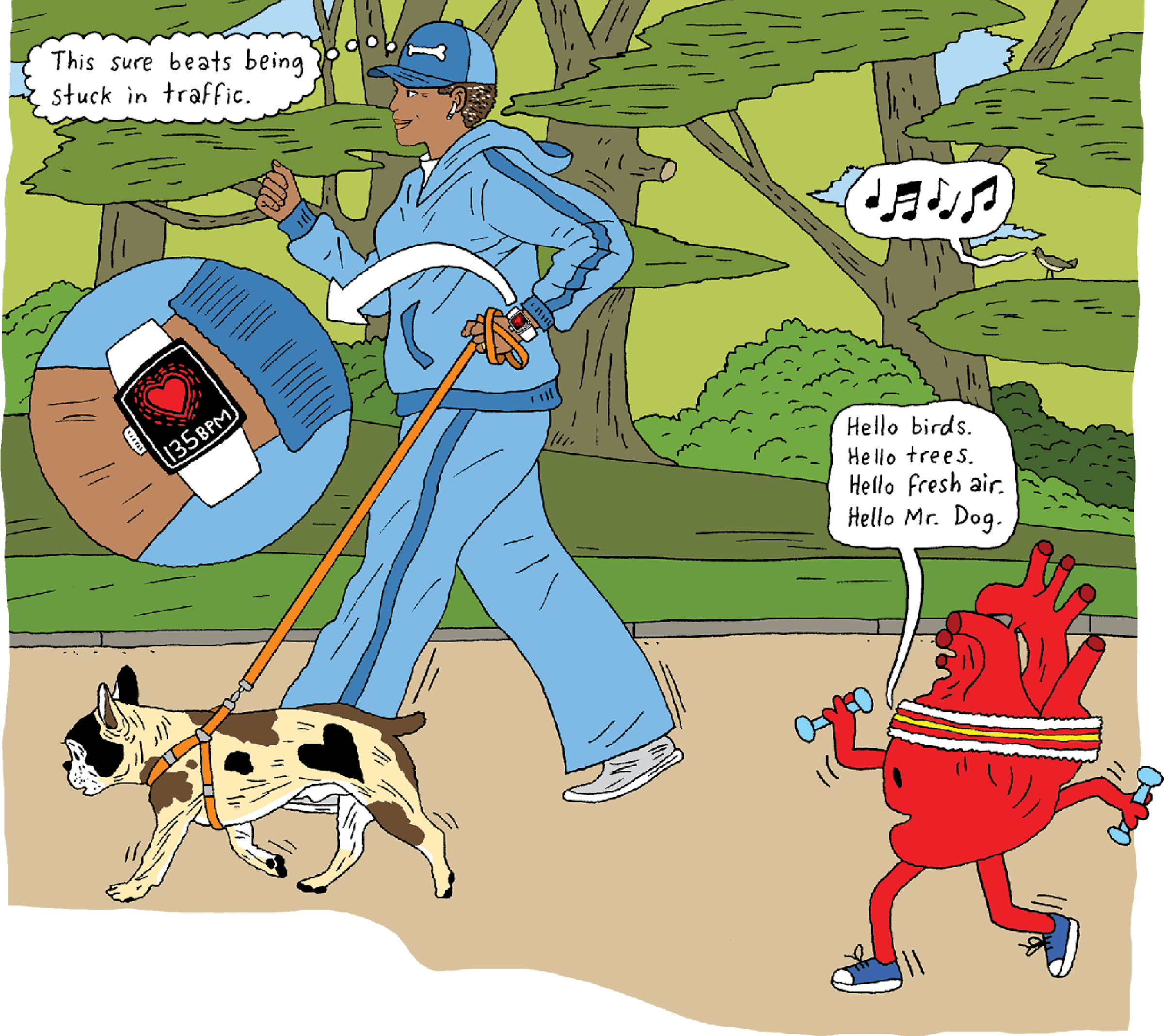
RISK #2
Heart Disease
Heart attack risk has fallen for most—but it’s on the rise in people in their 50s
ONE PERSON dies every 33 seconds in the U.S. from cardiovascular disease. And while the average age for a first heart attack isn’t until the mid-60s for men and early 70s for women, there’s every reason to believe that you—yes, you—are already on the path toward future heart issues.
“The average 50-year-old is going to have some thickening and hardening in their coronary arteries, some plaque buildup,” says Seth Martin, M.D., a preventive cardiologist at Johns Hopkins Hospital. Indeed, atherosclerosis—the buildup of plaque that puts us at risk for a heart attack—happens rapidly between the ages of 40 and 50, according to a 2020 study in the Journal of the American College of Cardiology.
Since 2011, the death rate from heart disease for those of us ages 45 to 64 has ticked upward by 4 percent, according to the CDC. “More Americans than ever are now overweight, and most of them are middle-aged,” says Martin. People in their 50s are less physically active, consume more sodium, and are more likely to smoke and less likely to take cholesterol drugs than those over age 65, according to CDC data.
“This is the decade where these problems really start to manifest,” says Martin, “and now is the time when you should be doing something about it.”
1. Know your numbers.
Get your blood pressure and cholesterol and glucose levels checked at least once a year, and make sure to tell your health care provider about any relatives who have had heart disease before age 65. And while you’re there, ask about your calcium score.
Wait … what’s that?
“It’s a five-minute CT scan that looks to see if you have any plaque around the arteries of your heart,” says Marc S. Eisenberg, M.D., an associate professor of medicine at Columbia University and coauthor of Am I Dying?!: A Complete Guide to Your Symptoms—and What to Do Next. If you have a moderate risk for cardiovascular disease because of high blood pressure, high cholesterol or family history, your doctor may want you to take just such a scan. A score between 1 and 10 means you have a less-than-10 percent chance of developing heart disease, while a higher score means you should consider more aggressive preventive measures, such as taking cholesterol medication, says Eisenberg.

2. Hit the trail.
Even after a lifetime of inactivity, regular exercise can do wonders for your heart health.
“If you find at least a few minutes every day to walk with just a little urgency, like you’re trying to catch a bus, that’s almost better than anything a doctor could do for you,” says Eisenberg. When you’re ready to get more ambitious, shoot for 40 minutes of walking per day, five days a week. “The effects can be as profound as taking a statin,” he says.
But, just as with walking for cancer prevention, the pace should be brisk. A walk where you can carry on a conversation but you’re breathing a little harder and your heart rate increases will have the most beneficial effects.
3. Don’t skip breakfast.
“People who skip breakfast may be at higher risk for heart disease,” although further study is needed, says Kershaw Patel, M.D., a preventive cardiologist at Houston Methodist Hospital. One study of 6,550 adults found that skipping breakfast made them 2.5 times more likely to die of a heart-related episode than those who ate breakfast every day. Another study found a 21 percent increased risk for cardiovascular disease among people who waited until midday to eat.
“In general, a healthy breakfast includes fresh foods,” Patel says. If you’re somebody who considers coffee and a pastry “breakfast,” try planning in advance to make sure you’re getting the most heart-healthy options, from grab-and-go hard-boiled eggs to rolled oats, yogurt and fresh fruit.
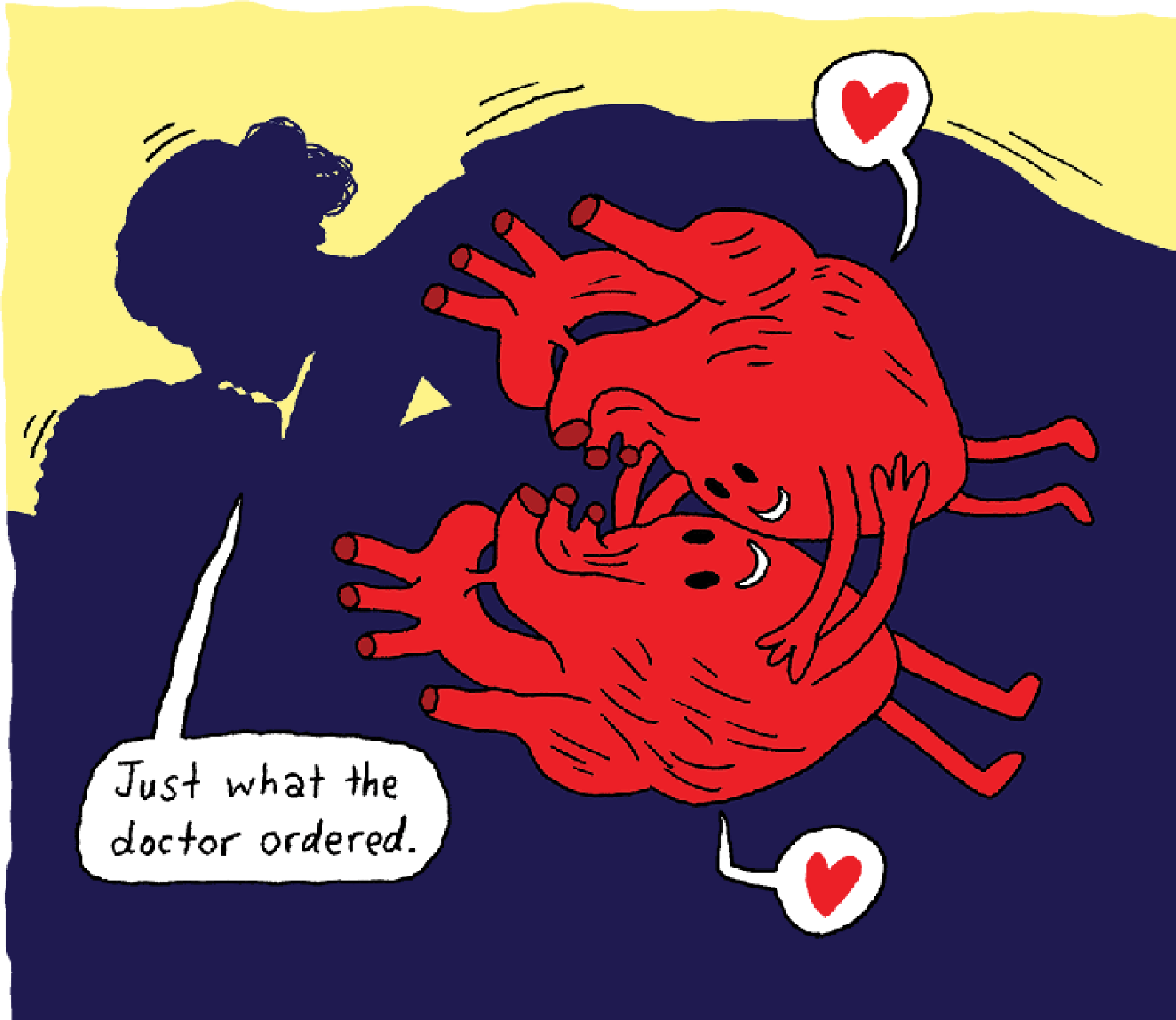
4. Make time for sex.
Having sex at least twice a week can reduce a man’s chances of dying from heart disease by 50 percent, according to a study in the American Journal of Cardiology, while women who report satisfying sex lives are less likely to develop peripheral artery disease.
But it’s about more than just the sex. Simply being alone and isolated can increase your risk of cardiovascular disease by up to 29 percent. For men, in particular, just being in a happy marriage where you feel emotionally supported can lead to better heart health overall.
SURVIVAL TIP
Join the sing-along
One study compared the effects of choir singing with simply listening to music. Those who sang showed higher levels of immunoglobulin A, an antibody that lowers the risk of cancer.
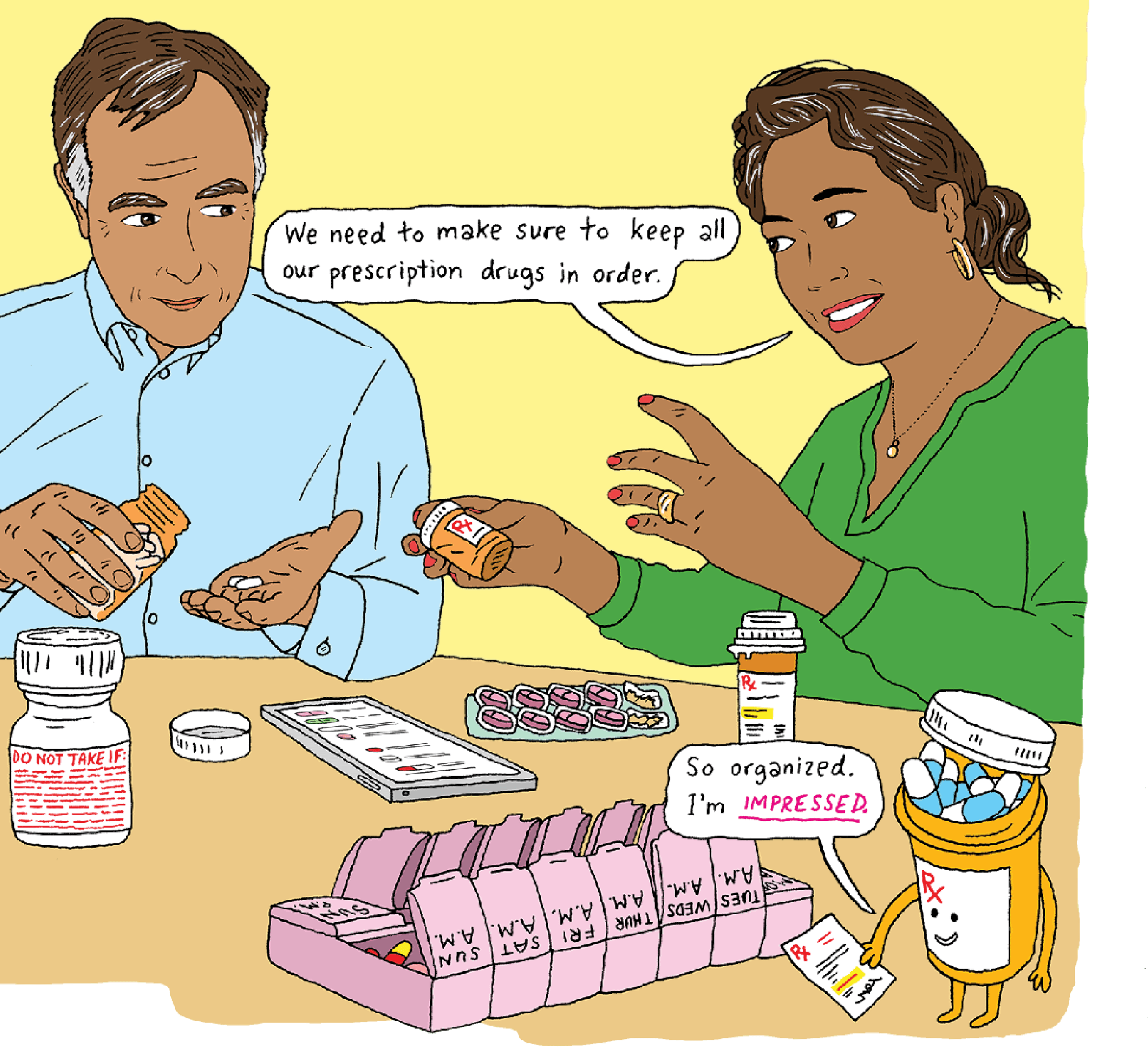
RISK #3
Unintentional Injuries
It’s not auto accidents but overdoses that take the most 50-something lives
WHEN YOU think of deaths caused by “unintentional injuries,” your first thought is probably car accidents. But according to CDC data, the most likely cause of accidental death for this age group is unintentional poisoning—primarily from overdoses and drug interactions. “By a wide margin,” says Paul Hsu of the Department of Epidemiology at the UCLA Fielding School of Public Health.
If this sounds like a recent development, it is, says Nora D. Volkow, M.D., director of the National Institute on Drug Abuse. “And it’s been driven mainly by opioids,” she says. Between 1999 and 2019, opioid-related overdose deaths for adults 55 or older jumped by a staggering 1,886 percent. And benzodiazepines—including Valium (diazepam), Klonopin (clonazepam), Xanax (alprazolam) and Ativan (lorazepam)—are used (and abused) more by people in their 50s than those 65 or older.
It’s a matter not just of addiction but also of the modern phenomenon called polypharmacy. “It’s just a fancy term for being on multiple medications,” says Hsu. “The older you get, the more chronic conditions you have and the more likely it is that you’re on different meds. But [patients] aren’t always aware of how those drugs will interact with each other.”
1. Understand how vulnerable you are.
Drugs—and alcohol—affect our bodies differently as we age. “We metabolize them more slowly, and that increases the risk of toxicity,” says Maryann Mason, associate professor of emergency medicine at Northwestern University’s Feinberg School of Medicine. They can also lead to or complicate lung and heart problems, especially when combined with other medications. Just consider Friends star Matthew Perry, who died at age 54 of coronary artery disease that was likely exacerbated by buprenorphine and ketamine, both of which were found in his system.
Some studies have found that a growing number of people over age 50 use medications either longer than prescribed or, in a third of cases, longer than recommended. Make sure you’re taking prescriptions only as directed, and that they haven’t become a crutch for sleep problems, anxiety or depression.
2. Appoint your own drug czar.
Doctors aren’t detectives, and if you see multiple specialists, one doctor may not know what another doctor has prescribed, especially if they’re in different networks. Your best bet is to bring a list of all the medications you’re taking, including OTCs, to your primary care physician to check for interactions. This is especially important if you wind up in the hospital or a rehab facility, notice unexplained weight gain or trouble with mental clarity or balance, or are diagnosed with a new medical condition, says Hedva Barenholtz Levy, a pharmacist in St. Louis and author of Maybe It’s Your Medications.
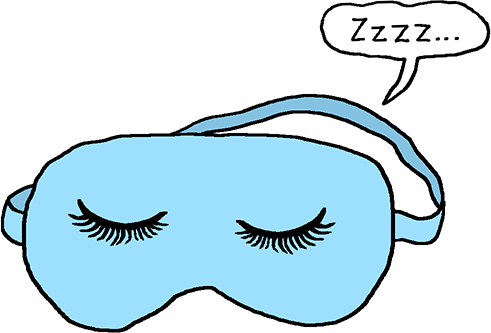
3. Treat pain and sleep disorders naturally.
Drugs can be a quick fix for many a midlife annoyance, but don’t turn your nose up at natural, nonpharmaceutical solutions. Physical therapy and yoga can be helpful for chronic pain, says Mason. Turmeric and ginger, whether in tea or supplement form, may lessen the discomfort of arthritis, according to several studies. CBD, the nonpsychoactive compound found in cannabis, has been repeatedly proven to have pain reduction benefits.
Which isn’t to say it’s easy. Drugs are fast and reliable, and alternative treatments don’t always bring immediate (or any) relief. “But if you stick with the nonmedical path, in the long run they may actually have better results than opioids,” says Mason.

4. Get out there.
A 2021 study found that an increased daily use of opioids and benzodiazepines among older adults was directly correlated with feelings of loneliness. And the cycle is never-ending: Just as drugs can lead to depression and suicidal thoughts, those dark emotions can be a breadcrumb trail back to drug use.
“It’s important to have people in your life who can notice when things are amiss,” says Mason.
SURVIVAL TIP
Establish some work boundaries
Having a boss who understands work-life balance could be good for your health. A 2023 study found that work-life balance reduces cardiometabolic risk in older employees and those with higher cardiometabolic risk to the level of someone five to 10 years younger.
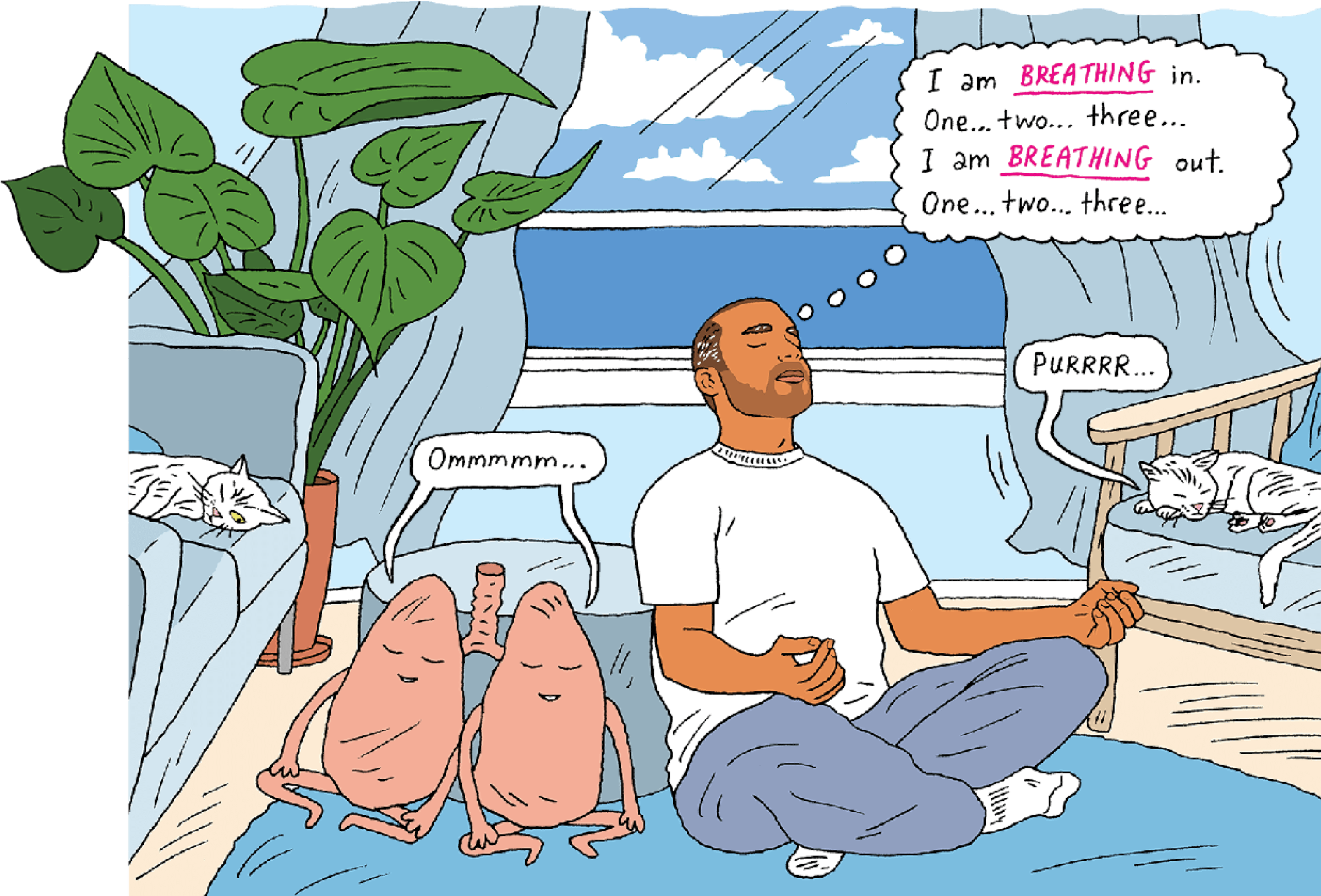
RISK #4
COVID-19 and Other Respiratory Illnesses
COVID is a real killer, but don’t ignore the risks of flu and pneumonia
BETWEEN THE ages of 50 and 64, your chance of dying from a respiratory illness like COVID-19, pneumonia or influenza is four times higher than for those in their 40s. And it’s not because viruses are getting stronger. It’s because your lungs and immune system are getting weaker.
Everything your lungs have endured and overcome for the last half century has made them incrementally weaker, says Paul Thomas, an immunologist at St. Jude Children’s Research Hospital. What’s more, with age, the muscles surrounding your lungs weaken and your rib cage stiffens, which makes it “less able to easily expand and contract as we breathe,” says James Nestor, author of Breath: The New Science of a Lost Art.
Meanwhile, with age our immune cells become less capable of recognizing the difference between a life-threatening infection and something minor, says Thomas. “So while they’re responding to false flags, the bigger viruses are able to slip through unnoticed.”
1. Practice long, slow breathing through your nose.
“When you’re breathing through the mouth, you’re exposing yourself to everything in the air,” says Nestor. By breathing through your nose, you not only filter out that junk, you also take slower and deeper breaths, “which sends signals to your nervous system to calm down.” Nestor recommends a method called coherent breathing: inhaling to the count of 6 and then exhaling at the same leisurely 6-count pace, which gives your body more time to access the oxygen you inhale. Studies have found that deep breathing exercises protect lungs from infection, improve sleep, and decrease stress and depression.
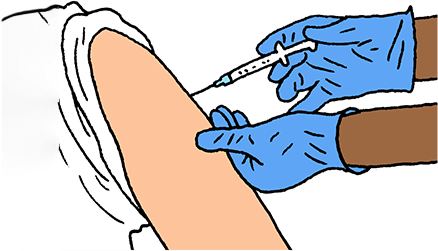
2. Get vaccinated.
Every respiratory infection you’ve ever had in your life has left its mark; the fewer infections you get going forward, the healthier your lungs will be into your later years. And it’s not just the frequency of infections but their ferocity that matters.
“Even if you get infected, with a vaccine you’ve got more T-cell players on the bench to come in and help, so you don’t get as sick,” says Thomas. Be sure to discuss influenza, COVID, pneumonia and pertussis vaccines with your doctor.
3. Sit up!
Hours spent at the computer means we’re not regularly stretching the ligaments in our rib cage. And as respiratory muscle strength and flexibility decrease, so does our lung function.
To correct this, Nestor recommends the rib stretch: Gently inhale as much air as you can through your nose and then hold your breath for 10 to 20 seconds (or however long you’re comfortable). Repeat at least three times per day.
4. Invest in an air filter.
An air purifier—even a portable one—can filter at least 99.5 percent of harmful particles from the air, and some studies suggest it might reduce the transmission of COVID. Look for devices that use HEPA filters with a MERV rating of 17 or higher, the most efficient at removing small particles from the air.
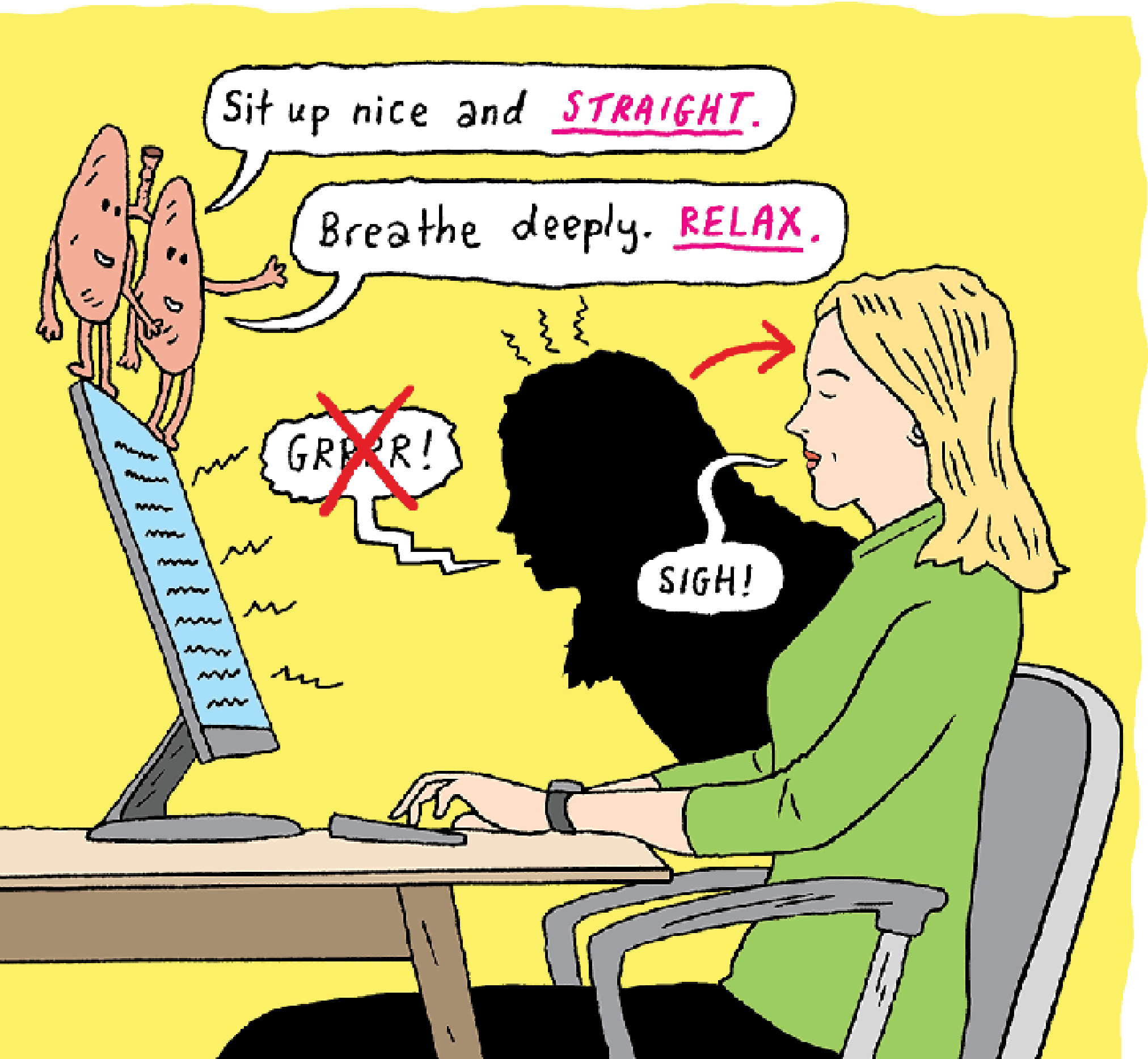
5. Get at least 600 IU of vitamin D every day.
Research has shown that getting enough D is vital to healthy lung immunity and may help reduce deadly inflammation in severe COVID-19 cases. Adults over the age of 50 should get at least 600 IU (15 micrograms) of D every day, according to RDA guidelines. It’s hard to get enough vitamin D from food alone, so talk to your doctor about checking your vitamin D levels and whether taking a supplement makes sense for you.
SURVIVAL TIP
Turn off the TV
Sedentary behavior is bad for our hearts, but research has shown that watching TV is more harmful than, say, sitting at the computer or reading the paper.
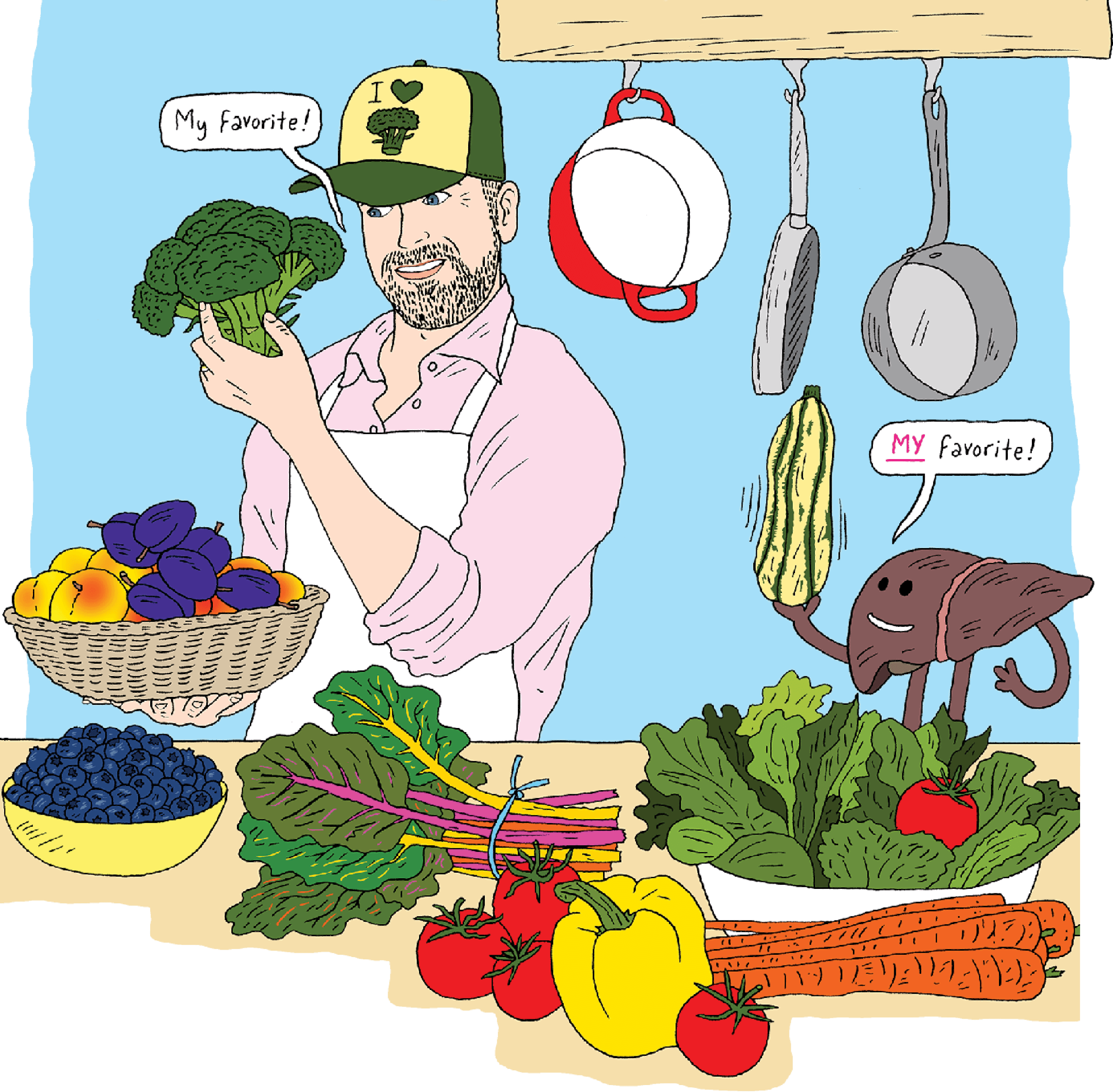
RISK #5
Liver Disease
As we get fatter, so do our livers—with potentially deadly consequences
SURPRISED TO see this on the list? Don’t be. For people in their 50s, deaths from liver disease have more than doubled since 2001. And while booze plays a part, it’s mostly because of our ever-expanding bellies.
“Much of it is metabolic dysfunction-associated steatotic liver disease (MASLD), which is the new mouthful term for fatty liver disease,” says Elliot Tapper, M.D., director of the Cirrhosis Program at the University of Michigan. Over time, this buildup of fat can lead to the liver becoming fibrous and scarred, which may eventually result in cirrhosis or even liver cancer.
Globally, more than two-thirds of people classified as either overweight or obese have some form of nonalcoholic fatty liver disease, according to a recent study in The Lancet Gastroenterology & Hepatology.
Our livers take a hit on everything from polypharmacy—the more medications we’re prescribed, the more we’re at risk of liver injury—to menopause—as estrogen levels drop, so does estrogen’s protective effect against liver scarring and liver cancer. And alcohol does more damage to us now than it did back when grunge was still a thing.
But if you start taking care of your liver today, you can actually reverse much of any damage that’s been done.
“Your liver doesn’t age in the same way kidneys age or your brain ages,” says Anna S. Lok, M.D., director of clinical hepatology at the University of Michigan. “The liver is robust and, in most cases, there’s very minimal decline with aging.”
“As long as you catch it early,” agrees Tapper, “the liver can recover. I’ve had patients in their 50s who were close to death because of liver disease, and they made the necessary lifestyle changes. There’s no magic pill I can give them, but through hard work, they’re able to extend the warranty on their livers by many years.”
1. Get a liver test.
Since the early stages of liver disease have few or no symptoms, you may not know your liver is sick until it is badly damaged. If you drink, even if it’s just “one or two drinks a night,” make sure your health care provider knows, says Lok. The result of a liver function test, used to measure enzyme levels, is often the first hint of liver damage.
Even without a history of alcohol abuse, your doctor may recommend the test if there are risk factors like obesity, high blood pressure and high blood triglycerides. But it’s important to be your own health advocate and be vocal about whether you should get a liver panel.
The more you share with your doctor, the better. “Are you taking nutritional supplements?” Lok says. “Some people believe taking more supplements will counteract alcohol and drugs, but some supplements can be just as dangerous, if not more so, to your liver.”
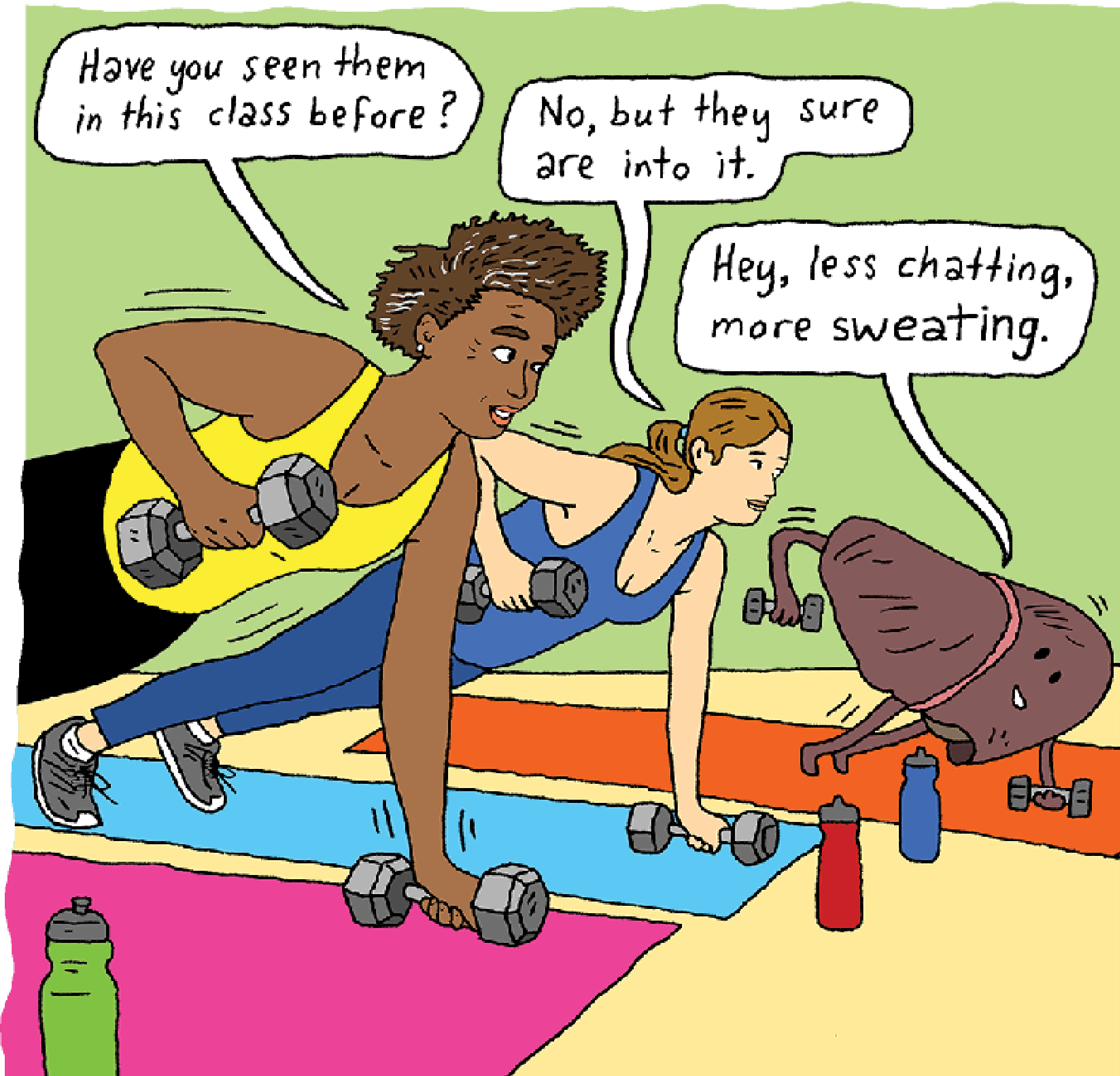
2. Put some color back in your diet.
Pasta, bread and rice are delicious, but studies have found that limiting refined carbs, simple sugars and processed foods is paramount in the defense against fatty liver.
“Carbs and sugars stress the liver,” says Tapper. “You don’t have to completely cut them out, but in general, make a goal of getting less white stuff on your plate.”
Cruciferous vegetables, including broccoli, cabbage, Brussels sprouts and cauliflower, are high in an inflammation-fighting compound that research suggests may help to decrease fat in the liver. And dark berries like blueberries, raspberries and cranberries are loaded with antioxidants called polyphenols, which several recent animal studies suggest might reduce liver fibrosis and manage age-related liver disease.
3. Get a move on.
People with MASLD—even those who aren’t overweight—are able to improve their early-stage liver disease through exercise. Try a combination of strength training—at least two to three sessions—and 150 minutes of moderate aerobic activity per week (that’s a half hour of brisk walking or bicycling five days a week), which studies show can significantly reduce liver fat.

4. Have that second (or third) cup of coffee.
“We do not know exactly how,” says Lok, “but many studies found that drinking three or more cups of coffee each day decreases the growth of scar tissue in the liver and may reduce the risk of liver cancer.” It may also reduce the severity of MASLD in overweight people with diabetes. If you avoid caffeine, decaf has also been shown to protect the liver.
SURVIVAL TIP
Swap sugar for maple syrup
One animal study found that maple syrup may reduce the formation of ammonia in the blood, which (in high quantities) can cause liver damage. And in mice fed a high-fat diet, maple syrup extract helped to mitigate liver inflammation.
Leading Killers of 50-Somethings*
Cancer: 61K
Heart disease: 54K
Unintentional injuries: 34K
COVID, flu and pneumonia: 19K
Liver disease: 13K
Diabetes: 12K
Cerebrovascular diseases: 9K
Suicide: 8K
Chronic lower respiratory diseases: 8K
Kidney disease: 4K
*CDC provisional figures for 2022
By Eric Spitznagel, Stephen Perrine and the editors of AARP